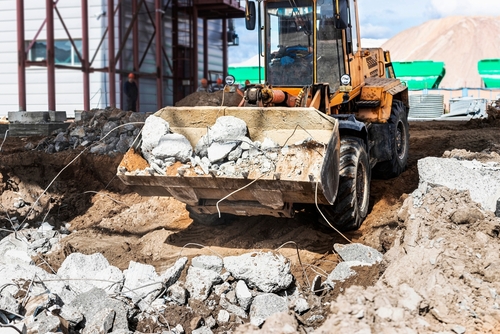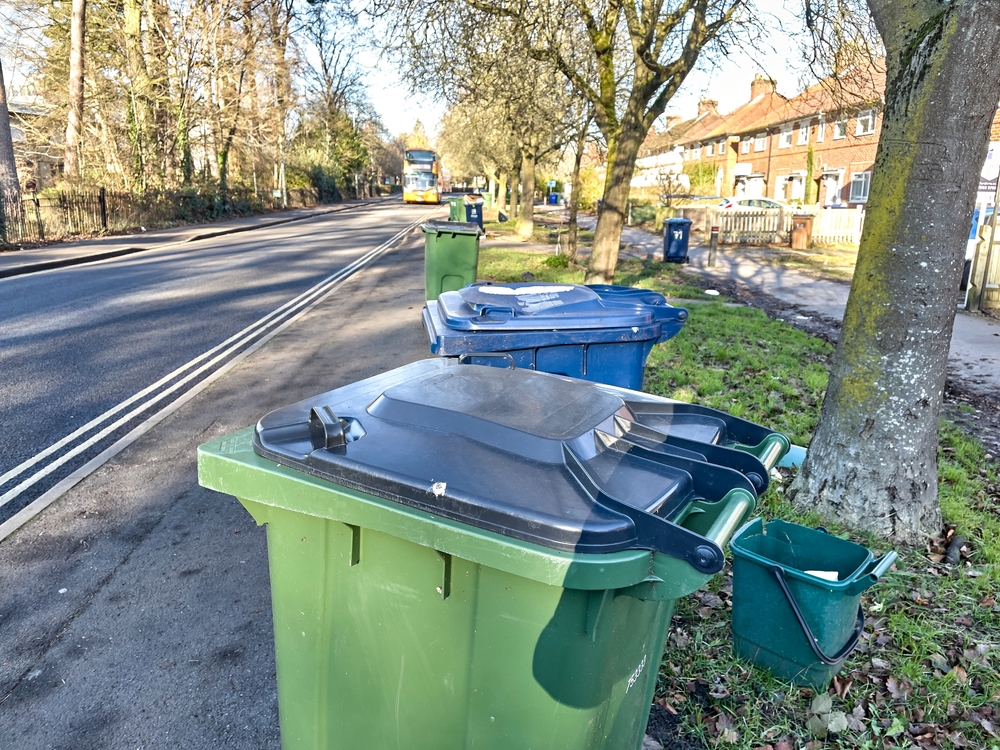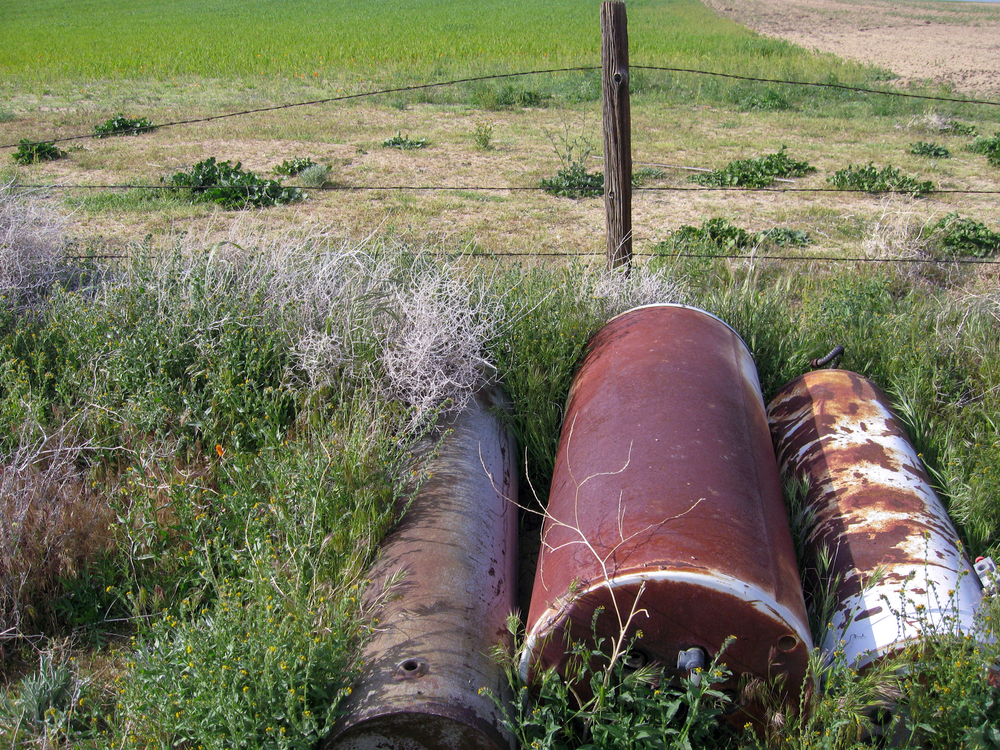July 12, 2024 - Benjamin Ehinger
Concrete Removal Cost: Factors Influencing Pricing
CALL NOW 844-762-8449
If you’re planning a construction or renovation project, understanding the costs associated with concrete removal is crucial. The national average cost for concrete removal ranges from $500 to $5,000, depending on factors like slab size, thickness, and location. It’s important to consider these factors along with potential additional costs before starting your project.
One of the cost-effective ways to manage concrete removal is by renting a concrete dumpster. This can simplify the process, especially for DIY projects. Different concrete removal costs can vary widely based on project specifics, so compare quotes from contractors to get the best deal.
Whether you’re tackling a small sidewalk demolition or a larger structural removal, being informed about the factors that affect costs will help you budget effectively. From labor expenses to disposal fees, every element plays a critical role in the overall expenditure.
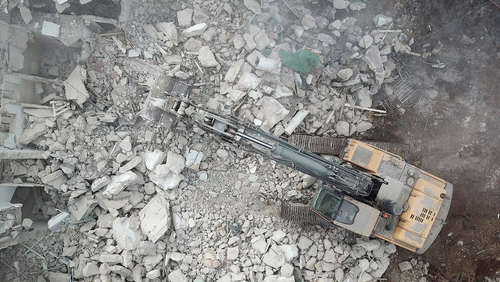 The cost of removing concrete can vary significantly based on several critical factors. The most notable include the characteristics of the material and the complexity of the demolition process.
The cost of removing concrete can vary significantly based on several critical factors. The most notable include the characteristics of the material and the complexity of the demolition process.
 When calculating the expense of concrete removal, consider labor, equipment, and disposal fees, as they play crucial roles in the total cost.
When calculating the expense of concrete removal, consider labor, equipment, and disposal fees, as they play crucial roles in the total cost.
 Efficient project management and proper timing are crucial aspects to consider in any concrete removal project. Additionally, obtaining necessary permits ensures compliance with regulations.
Efficient project management and proper timing are crucial aspects to consider in any concrete removal project. Additionally, obtaining necessary permits ensures compliance with regulations.
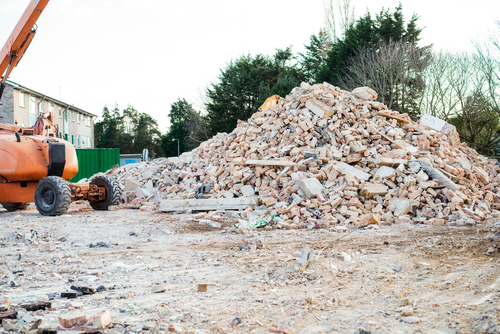 Understanding the total expenditure for concrete removal involves analyzing various cost factors and using accurate tools. By breaking down these elements, you can get a clearer picture of your specific project’s financial requirements.
Understanding the total expenditure for concrete removal involves analyzing various cost factors and using accurate tools. By breaking down these elements, you can get a clearer picture of your specific project’s financial requirements.
Key Takeaways
- The national average cost for concrete removal varies from $500 to $5,000.
- Renting a concrete dumpster can save time and money.
- Factors like slab size, thickness, and location significantly influence removal costs.
Understanding Concrete Removal
Concrete removal involves various factors like the type of concrete surface and the method used for removal. It is crucial to understand these aspects to effectively plan and execute your project.Types of Concrete Surfaces
Concrete surfaces can vary greatly depending on their usage and structure. Concrete slabs are common in floors and patios, while driveways and sidewalks are often made of more durable materials. Foundations and stairs also constitute common concrete structures that may need removal. Different surfaces require different approaches. For example, removing a sidewalk or driveway might be simpler than addressing interior floors or stairs because of accessibility issues. Identifying the surface correctly helps in choosing the right removal technique and estimating costs.Concrete Removal Methods
Concrete removal methods vary based on the type and size of the slab or area. Manual removal involves sledgehammers and pry bars for smaller jobs like patios or limited areas. For larger surfaces, machinery like jackhammers or skid-steers are more effective. Hydraulic breakers are useful for thicker foundations or extensive driveways. In some cases, cutting saws are used to create smaller, more manageable pieces of concrete. Each method has its own cost implications and efficiency, making it crucial to match the technique with the project needs.Pre-Removal Considerations
Before starting a concrete removal project, assessing the scope and choosing the right equipment are essential steps to ensure efficiency and cost-effectiveness.Assessing the Project Scope
Determining the extent of your concrete removal project is crucial. Measure the area to find out the square footage that needs to be removed. Note whether the concrete includes rebar or other reinforcements, as this will affect both removal techniques and costs. Accessibility to the site should be evaluated. Consider if there are any obstacles that might restrict machinery access. For instance, tight spaces may require specialized equipment or manual labor, which could increase expenses. Decide whether it’s a DIY project or if you need professional help based on the project’s complexity.Choosing the Right Equipment
Selecting the proper equipment can make a significant difference in both time and labor costs. For small areas, manual tools like jackhammers might suffice. However, for larger projects, using heavy machinery such as excavators or skid steers is more efficient. Evaluate whether machinery is available for rent or if a professional service will be more cost-effective. Pay attention to the type of machinery required based on the presence of rebar. Tools like cutting saws might be needed to handle reinforced sections. Ensure you have all necessary safety equipment and are familiar with operating the machinery if attempting a DIY approach.Cost-Defining Factors
 The cost of removing concrete can vary significantly based on several critical factors. The most notable include the characteristics of the material and the complexity of the demolition process.
The cost of removing concrete can vary significantly based on several critical factors. The most notable include the characteristics of the material and the complexity of the demolition process.
Material Characteristics
Material characteristics play a vital role in determining removal costs. The type of surface, such as reinforced concrete with rebar, tends to be more expensive to remove. This is due to the additional labor and specialized equipment required to handle the reinforcing materials. The concrete thickness also impacts the price. Thicker slabs, for example, require more effort and time to break apart and remove. Thin, unreinforced concrete is generally cheaper to demolish. This is because it is easier to break and does not require handling embedded materials like rebar. Additionally, if the concrete has been treated or is of a specialized form, such as decorative concrete, expect higher costs due to the additional labor or tools required for removal.Demolition Complexity
Demolition complexity significantly affects the cost. Factors such as the accessibility of the concrete slab can drastically influence expenses. If heavy machinery cannot easily reach the area, manual labor increases the price. The size of the project matters too. Large slabs often require more extensive demolition efforts and labor. A larger project might also involve removing multiple layers or sections of concrete, increasing both time and cost. Finally, local regulations and disposal requirements can add to the complexity. Ensure you account for the proper disposal of debris, which may be subject to environmental fees or special handling regulations. This can further raise the overall price.Demolition Techniques
Concrete removal involves different techniques depending on the project’s scale and complexity. These methods generally fall into manual and mechanical removal categories, each with specific tools and approaches.Manual Removal
Manual removal is suitable for small-scale projects or areas with limited access. This method relies on hand tools and physical labor. Workers typically use sledgehammers, pry bars, and jackhammers. Sledgehammers provide the initial impact to break up the concrete into smaller, more manageable pieces. Jackhammers are often employed for thicker slabs where a more robust tool is necessary. Hand tools like shovels and wheelbarrows are then used to collect and move the broken concrete. Manual removal can be time-consuming and physically demanding. It is generally more cost-effective for minor projects but may require more labor and time. Ensuring proper safety gear, such as gloves and eye protection, is crucial to prevent injuries during the process.Mechanical Removal
Mechanical removal is ideal for larger projects requiring efficient demolition. This technique uses heavy machinery such as bulldozers, excavators, and specialized demolition tools. Mechanical methods are faster and can handle reinforced concrete. Excavators equipped with hydraulic breakers or pulverizers can swiftly dismantle concrete structures. Bulldozers can then push the debris into piles for easier removal. Mechanical removal is more expensive but much quicker than manual methods. It is essential for large-scale demolitions where manual labor would be impractical. Operators of these machines must be skilled to ensure safe and effective work. Utilizing mechanical methods can significantly reduce project completion times and improve overall efficiency.Analyzing Removal Costs
 When calculating the expense of concrete removal, consider labor, equipment, and disposal fees, as they play crucial roles in the total cost.
When calculating the expense of concrete removal, consider labor, equipment, and disposal fees, as they play crucial roles in the total cost.
Labor and Equipment Costs
Labor costs can vary significantly depending on your location and the complexity of the job. On average, labor charges range from $2 to $6 per square foot. Hiring professionals ensures efficient and safe work, reducing the risk of potential injuries. Specialized equipment is often needed to break up and remove the concrete. This can include jackhammers, skid-steer loaders, and other heavy machinery. Renting such equipment can add to the cost, typically ranging from $50 to $300 per day. Including both labor and equipment fees, the total cost might increase to about $10.25 to $12.48 per square foot, as noted on Homewyse.Disposal Fees
Disposal fees are another important aspect to consider. These fees cover the cost of transporting and dumping concrete debris at a landfill or recycling center. Disposal fees generally range from $30 to $100 per ton. The exact cost can vary based on the distance to the disposal site and local landfill charges. Transportation costs may also apply if the debris needs to be hauled over a long distance. The cost of disposing of the concrete is influenced by its weight, which can be significant, especially for large-scale projects. According to HomeAdvisor, size, reinforced vs. non-reinforced concrete, and thickness can also impact the overall price of disposal.Labor Costs and Considerations
Understanding labor costs and evaluating the choice between hiring a professional and doing it yourself can significantly impact your concrete removal project. Each option offers distinct advantages and challenges, influencing both cost and effort.Hiring a Professional
Hiring a professional for concrete removal can save time and ensure a thorough and safe job. Labor costs range from $1.50 to $4 per square foot depending on the complexity and location of the project. Professionals possess specialized tools and expertise, which are crucial for projects involving large slabs or reinforced concrete. Benefits include:- Efficiency: Experienced workers complete the job quickly.
- Safety: Handling heavy machinery and debris can be hazardous.
- Disposal: Professionals often handle the disposal of material.
DIY Concrete Removal
DIY concrete removal can be a cost-effective option if you have the necessary skills and equipment. Basic equipment rentals, such as jackhammers and concrete saws, usually range from $50 to $150 per day. You’ll also need a truck to haul away debris, which could add to rental costs. Considerations include:- Time and Effort: Removing concrete is physically demanding and time-consuming.
- Safety Precautions: Proper protective gear is essential to prevent injuries.
- Permits: Some areas may require permits for large-scale removal projects.
Project Planning and Management
 Efficient project management and proper timing are crucial aspects to consider in any concrete removal project. Additionally, obtaining necessary permits ensures compliance with regulations.
Efficient project management and proper timing are crucial aspects to consider in any concrete removal project. Additionally, obtaining necessary permits ensures compliance with regulations.
Timing and Scheduling
When planning a concrete removal project, consider the optimal timing to minimize costs and disruptions. The project type, such as driveway or patio removal, can influence scheduling. Hiring contractors during off-peak seasons might reduce labor costs. Ensure that the scheduling aligns with other planned renovations. This will help to avoid delays and additional expenses. Setting realistic timelines for each project’s phase helps ensure a smooth workflow and avoids unpredicted costs. Communication with your contractor is key. Regular updates and meetings can help maintain progress. Proper planning helps anticipate challenges and ensures efficient completion.Required Permits
Before removing concrete, check with your local municipality regarding required permits. Different project types may require specific permits depending on the location and scope. Permits help ensure the project complies with safety and zoning regulations. Failure to obtain necessary permits can result in fines or delays. Research the cost and application process as part of your overall project cost. Some areas may require environmental considerations. Verify if there are any special permits needed for dealing with concrete waste disposal. Staying informed about permit requirements helps in maintaining a smooth project flow. Ensure all permits are acquired before commencing any work to avoid legal complications. Proper compliance with local regulations ensures safe and efficient project execution.Environmental Considerations
When removing concrete, it’s essential to address how the debris will be disposed of and how any hazardous materials should be handled. Proper methods ensure you minimize environmental impact and comply with regulations.Debris Recycling and Disposal
Recycling concrete debris can significantly reduce disposal costs and environmental impact. Many facilities can crush and process the removed concrete into aggregate for new construction projects. This practice preserves natural resources and reduces landfill usage. You can rent a dumpster specific for concrete disposal, which ensures your debris is handled correctly. The specific disposal method might vary, but discussing options with your waste removal provider can help determine the best fit for your needs. Some companies might offer lower rates for recyclables, impacting your overall project budget positively.Handling Hazardous Materials
Concrete structures may contain hazardous materials like asbestos or lead-based paint. Proper identification and management of these materials are crucial to minimize health risks and comply with environmental regulations. For example, asbestos needs to be handled by certified professionals to ensure safe removal and disposal. When engaging in concrete removal, inform your contractor about any potential hazards. Proper documentation and specialized disposal methods are necessary. Depending on your location, specific procedures must be followed to transport and dispose of hazardous waste. This site emphasizes the importance of consulting with professionals to manage these risks effectively.Additional Costs and Factors
Concrete removal costs can vary significantly based on geographic location and the need for further landscaping or restoration. It’s essential to factor in these variables to get a clear picture of your total expenses.Geographic Location Variables
The cost of concrete removal is influenced by your geographic location. In metropolitan areas, higher labor costs and disposal fees can drive up prices. For instance, in urban centers, you may pay more due to the difficulty of transporting debris out of congested areas. Zip codes also play a role since they can reflect regional economic conditions and contractor rates. Areas with a higher cost of living will generally see higher removal costs. Additionally, remote locations might incur additional charges for transporting machinery and debris. Local regulations may impact the cost as well. Some regions have strict guidelines regarding waste disposal, which can add to the overall expense. Be sure to check with local authorities for any specific requirements in your area.Landscaping and Restoration
After concrete removal, you may need to address the exposed area with landscaping or restoration efforts. Sod installation can range from $1 to $2 per square foot, which adds up quickly if you’re covering a large area. Other landscaping options might include planting grass seed or adding mulch. Concrete replacement usually spans $8 to $18 per square foot. This can be a significant part of your budget if you’re planning to pour new concrete. You may also consider additional features like walkways or garden beds, which can increase both the aesthetic appeal and cost. accessibility of the job site affects the expense too. Hard-to-reach areas might require more time and specialized equipment, adding to the total cost.Calculating Total Expenditure
 Understanding the total expenditure for concrete removal involves analyzing various cost factors and using accurate tools. By breaking down these elements, you can get a clearer picture of your specific project’s financial requirements.
Understanding the total expenditure for concrete removal involves analyzing various cost factors and using accurate tools. By breaking down these elements, you can get a clearer picture of your specific project’s financial requirements.
Comprehensive Cost Breakdown
To start, concrete removal costs vary widely based on several factors. These include the size of the slab, its thickness, and the area’s accessibility. For instance, costs for a small 100 square foot slab can range from $200 to $800, while a larger 2,000 square foot slab might cost between $6,000 and $16,000. Key components include:- Labor: Typically $2 to $6 per square foot.
- Disposal Fees: Variable based on local regulations.
- Reinforcement Materials: Additional costs if the concrete has rebar or mesh.
Using Cost Calculators
Utilizing a cost calculator can greatly simplify this process. Tools available online, such as the Homewyse Calculator and the Inch Calculator, offer tailored estimates by inputting your project details, including zip code, slab size, and specific requirements. These calculators also factor in regional variations, labor rates, and material costs, delivering a personalized breakdown. By using them, you’ll have a reliable figure to work with, leading to more informed budgeting for your project. Accuracy in using these tools ensures that you manage your finances effectively without any unexpected expenses.Frequently Asked Questions
Concrete removal costs vary significantly based on several factors such as the size and type of the concrete structure, location, and the methods used for demolition.What factors influence the cost of residential concrete removal?
Residential concrete removal costs depend on the thickness and type of concrete, whether it’s reinforced, and the total area to be removed. Your location and disposal fees also play a role. It’s crucial to consider accessibility, as hard-to-reach locations may increase labor charges.How much does it typically cost to remove a driveway made of concrete?
On average, driveway concrete removal ranges from $600 to $3,000. The final cost depends on the driveway’s size, thickness, and whether the concrete is reinforced. For instance, a standard 600 square foot driveway might cost roughly $1,800 to $2,400.What are the average demolition costs per square foot for concrete structures?
The average cost to tear out concrete structures ranges from $2 to $6 per square foot. Complex projects like reinforced concrete or those with thicker slabs will be on the higher end of this spectrum. Disposal fees, typically $30 to $100 per ton, can also add to these costs.Can you provide an estimate of concrete removal expenses per cubic yard?
Concrete removal expenses are generally between $120 and $170 per cubic yard. This includes the cost of breaking up, loading and hauling away the debris. Special scenarios, like removing heavily reinforced or very thick concrete, might lead to higher costs.What methods are most efficient for removing old concrete?
The most efficient methods for removing old concrete include hydraulic or pneumatic breakers, concrete saws, and skid steer loaders. Choosing the right method depends on the project size, type of concrete, and access to the site. Some methods require professional expertise and specialized equipment to ensure safe removal.How is the cost for concrete demolition calculated per cubic meter?
Concrete demolition costs per cubic meter generally fall between $150 and $200. This price includes breaking up the concrete, loading, and disposal. Factors like the reinforcement of concrete and the presence of any hazardous materials can influence the overall expense. Accurate measurements and assessments are essential for precise cost calculation.RECENT BLOGS
Our Reviews
kristin hester
1723492493
Vanessa was amazing!
William Garrett / Knox
1723118753
VanessaVanessaVanessa
James Knox
1723064655
VanessaVanessaVanessaAbsolutely amazing.... she definitely sold me to this company...
james
1723045578
Heather was very professional and kind.
Jennifer Quiroz
1722873321
This company has been great in helping us getting what we need, making sure it gets there in time and gets picked up asap. They have the best staff working there. I worked with a couple of ladies, both were amazing and I remember Stephanie always assisting me on everything in a very fast way. Best company out there😁😁
